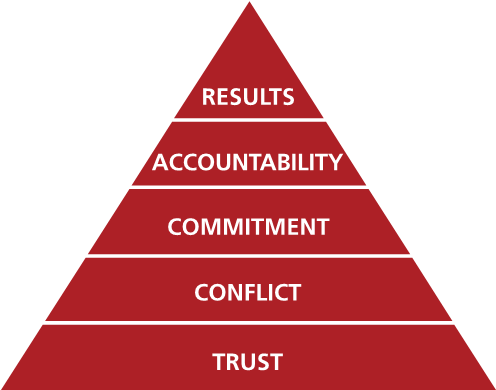A Process that Can Transform Your Single-Family Office Staff into an Empowered Team

The world that a few months ago seemed volatile, uncertain, complex, and ambiguous (or VUCA as many refer to it), makes us nostalgic for its normalcy. What we are experiencing today is humbling at a depth never seen in in our lifetimes. What family enterprises want from their Single-Family Offices (SFOs), and especially their leaders, is something no one knows yet. That answer has to be created by you and your team, or it will be created for you. A proactive approach is better.
Who can best tackle this job?
SFO leaders have my utmost respect. You may have one client, who is also your boss, who may have little knowledge of the field, and have little motivation to remedy that. But you are the leader and it starts with you. So, consider: What is your capacity and agility for empowering those you lead? See the Leadership Agility chart below.
Capacity is your ability to evolve your mindset, your emotional intelligence (think self-awareness and empathy), your effectiveness in framing complex issues, and the ability to step back from a system to see it more clearly. That system can be your own ego, your client family, their enterprise(s), your industry or even your culture.
Agility is having the mindfulness to decide which style or “gear” best suits the circumstances and goals. Most of us, for example, start off crawling in life, then walk, run, ride a bike, and drive a car. A few of us become pilots. A pilot then may have the capacity to fly to another country but use her agility to decide that taking a bike to the corner store makes the most sense.
Leadership Agility and the Stages of Leadership

How does this apply to you? If, as an Expert in the chart above, you are telling everyone your orders and solving all the problems—creating a spoke-and-wheel dynamic—that will not lead to a team with much capacity and agility. Think: Let’s all discuss my vision, improve it, and hit our goals!
If, you have greater capacity, (i.e. as an Achiever in the chart above) and you are able to lead to gain buy-in from your team to then your strategic vision from the team that can see the trends in the field, so that it is about the leader leading the team, that is better. Think: let’s all discuss my vision, improve it, and hit our goals!
Consider now an even greater capacity: the capacity to shift your identity to where you are no longer attached to having to be the leader. You have the agility to do be the leader, but you can allow the team or individuals to step up and lead. You have the capacity to deal with problems and strategize, but also to influence the culture of the family and SFO staff. You think about teamwork as being as much about developing the team members as it is about the outcome. Think: How can we all develop as individuals, a team, and a SFO while we reach goals we co-create?
HOW?
A proven, powerful way that has helped thousands of teams, outlined below can be used in in families and SFO’s to become more cohesive and effective.
This pyramid, based on the Five Behaviors of an Effective Team by Patrick Lencioni, outlines the model we have used with families and family enterprises, including family office teams. The entire foundation of the work is based on vulnerability-based trust, which means that we can get beyond our defenses and open up and talk about the real issues at play. This type of trust changes everything. Without it, teams invest a lot of time misinterpreting others’ actions and side-stepping the real issues that need to be discussed. It’s about establishing the kind of trust that allows us to get over the proverbial bump under the carpet we all keep tripping over.

As the vulnerability-based trust evolves, we help the team reframe conflict from something that is personal and potentially destructive that people try to avoid into something that is idea-based, constructive, and can be embraced (even if it is a stretch). That leads to a further reframing of commitment from consensus—a popular approach in many families and teams—to a commitment arrived at after everyone felt heard and included even if their choice was not ultimately chosen.
Next comes accountability. How do we respectfully and professionally hold team members to account for their commitments? Building on the trust, ability to engage in conflict, and create true commitment, accountability then becomes baked into the culture. It is where, somewhat paradoxically the more the leader is willing to hold team members accountable, the more the team itself will create accountability among the teammates. This is incredibly powerful.
The results are seen as including not only the outcomes but how we got there. Put another way: It values the impact on the relationships as part of the results which can be reframed from a focus on individual goals to committing to the team’s goals. Think: we before me.
I have seen this work with many teams; and if the leader and the team are committed to the work, to the practice, it can be transformative. It can lead to more passion, greater engagement, professional development, alignment with purpose, and actually more fun.